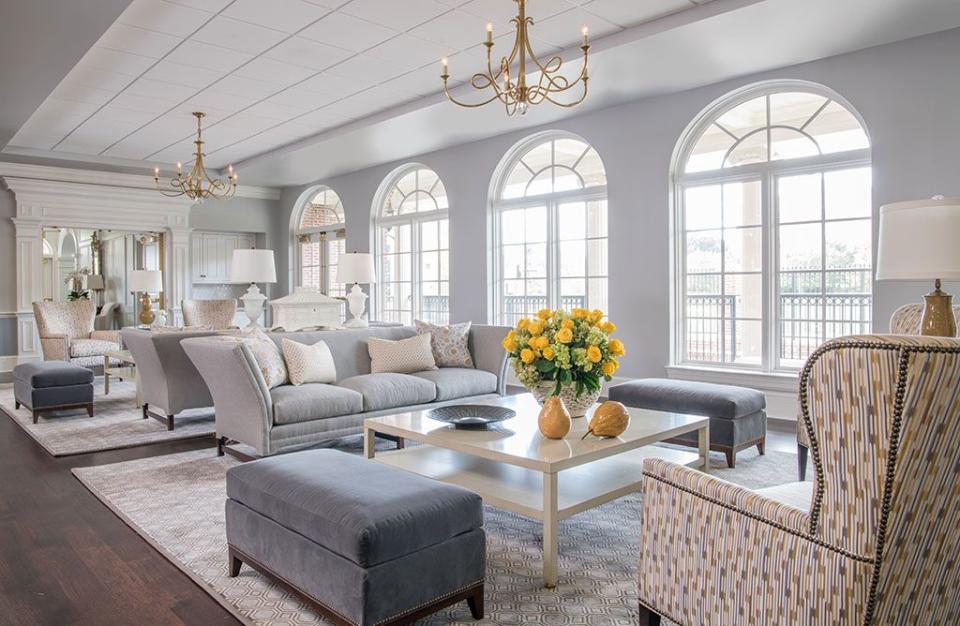3 Ways To Make A Drop Ceiling Look Good, According To Designers
It's time to bring some form to their function.

In the balance of form and function, drop ceilings lean heavily toward function. “The pro is that they give you speedy access to your plumbing, ductwork, or wiring with the push of a tile,” says Shivani Vyas, interior designer and founder of Studio Vyas. “One of the biggest drawbacks, however, is their sterile and commercial aesthetic—they may even shorten a space’s height.” Whether you’re trying to make your house look more like a home or rid an office of its clinical feeling, these three tips will help disguise the dreaded drop ceiling.
Meet the Experts
Shivani Vyas is an interior designer and the founder of Studio Vyas in Macon, Georgia.
Sarah Yeager is a staging consultant at Mombo Interiors in Austin, Texas.
Paint Them a Light Color
The easiest and least expensive solution, according to staging consultant at Mombo Interiors Sarah Yeager, is to whip out a roller and some paint—light-colored paint, to be specific. “If the ceiling is already low, painting it white or a light color that corresponds to the current wall color is best to give it the illusion of being taller,” she advises.
Though the current trend is to hyper-saturate rooms with the same color on both the ceiling and walls, this might make the room feel claustrophobic or cave-like. “I would suggest trying to draw as little attention as possible to the ceiling. People find soaring ceilings a mark of luxury and I would want to try to produce that feeling as much as possible,” adds Yeager.
Related: How to Paint a Ceiling Without Getting Paint on Everything, Including Your Floors and Yourself
Install Decorative Ceiling Tiles
When you first think of ceiling tiles, what likely comes to mind are the generic textured options usually found in schools and offices. “The best solution for drop ceilings is to go beyond the conventional by searching for decorative drop ceiling tiles,” Vyas explains. “You can find options that run the gamut from traditional to contemporary styles, including coffered ceilings, vintage tin, antique nickel designs, and beautiful medallions.”
While they do cost more, you’ll likely spend less on the rest of your space trying to distract from the utilitarian ones. Plus, Vyas adds, installation is simple: “If any portion of your ceiling becomes damaged, you can just swap out that corresponding tile instead of having to tackle a larger chunk of square footage.”
To create a cohesive look, Vyas recommends scouting a ceiling tile that complements both your design style and your home's architecture. This will help to camouflage the drop ceiling as well.
Create a False Ceiling
If you have a tall room or don’t anticipate needing access to things like ductwork, Yeager recommends going with a false ceiling instead of decorative ceiling tiles. “False ceilings tend to call more attention to the issue than just covering it up, and as a stager, I try to diffuse any potential issues.” Beadboard or grooved plywood boards are both solid options, with the former ideal for creating a farmhouse look and the latter able to be interpreted as shiplap or even mid-century modern if walnut-toned.
“If the boards are wood, they can be stained to give the room a little more texture and visual interest,” says Yeager. “However, some of them come pre-primed, which you cannot stain. I would paint pre-primed boards white.”
For more Southern Living news, make sure to sign up for our newsletter!
Read the original article on Southern Living.

